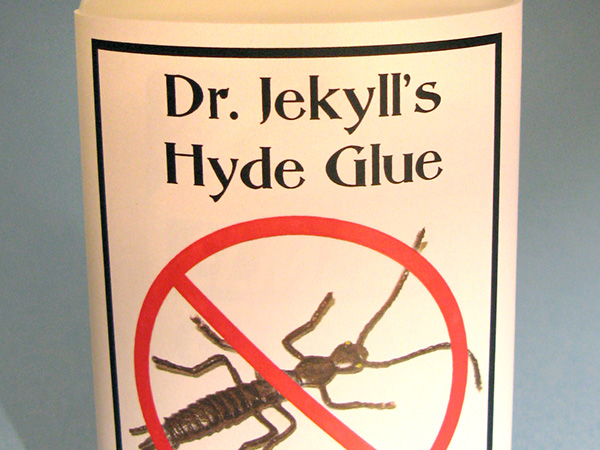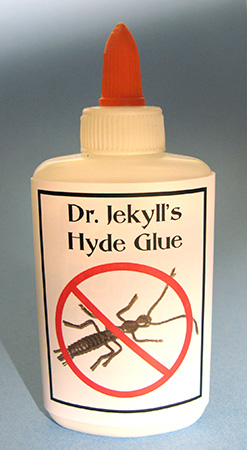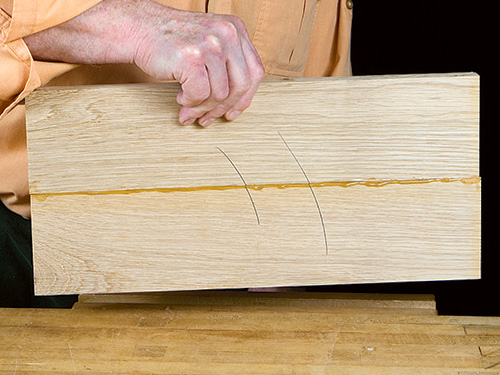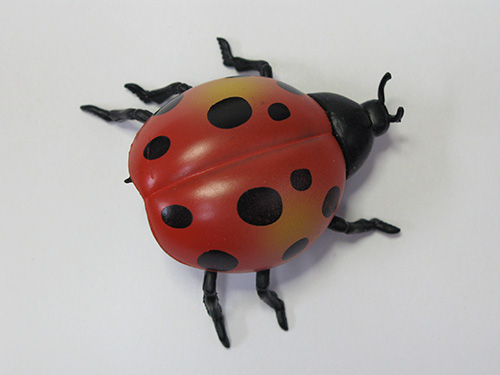
When Ahm Sari started woodworking as a hobby, everyone told him that hide glue was far and away the best glue he could use. However, as a devout Jain who abhorred killing animals, the thought of using glue made from animals quite literally turned his stomach. Realizing that there must be a lot of vegans and PETA followers who felt the same way, he set out to create a kinder, gentler hide glue: one that did not depend on dead animals.

The result is Dr. Jekyll’s Hyde Glue, named for Robert Louis Stevenson’s fictional character who is really something different than he appears to be. “Actually,” Ahm told me, “I wanted to name it ‘I can’t believe it is not hide glue,’ which really sums up what people feel about it once they try it. However, the company that sells the butter substitute of a similar name prevented me from calling it that. In fact, I was going to follow that up with a synthetic shellac substitute I created and call it ‘I can’t believe it’s not shellac,’ but they stopped that as well. Instead, I call it ‘Don’t bug me,’ a reference to the fact that no bugs are killed in creating it.

“My background is in polymer chemistry,” Ahm explained, “so coming up with the formulas was not really all that difficult. Like the real thing, my Hyde Glue can be used as a cold-set glue, sold in liquid form, which gives you a fairly long open time for glue-ups. However, I also sell a version that starts out as a semi-solid and must be heated. Just like the real thing, the hot version sets much quicker and depends on cool temperatures as well as moisture loss to set. Both form essentially the same strong, creep-free glue bonds, and like hide glue, are reversible with heat or hot water.

“My ‘Don’t bug me’ shellac substitute is also a direct replacement, in this case for shellac. It’s a great sealer and finish, can be wiped on, brushed or sprayed, is slightly amber and dries very fast. The finish it forms is hard, waterproof, stain-resistant and buffs up easily. You can make it anything from satin to high gloss just by rubbing it down, with fine steel wool, or up with automotive polishing compound.”

When I pointed out that this sounds remarkably like nitrocellulose lacquer, which in fact was originally created as a substitute for shellac back in the early 20th century, Ahm insisted it was quite different. I asked him to explain the difference, but he said it was too technical and I most likely would not understand. “In any case,” he insisted, “it is proprietary, so I can’t tell you.”
At present, Ahm does not have much distribution, but he hopes that will change. In the meantime, you can buy either product direct from his website, though there is an additional flammable item shipping charge for ‘Don’t bug me’ shellac substitute.
“For me, it is all about being a good woodworker who is also kind to animals,” Ahm Sari insisted. “Just because you love wood does not mean you should have to apologize to the animals.”





